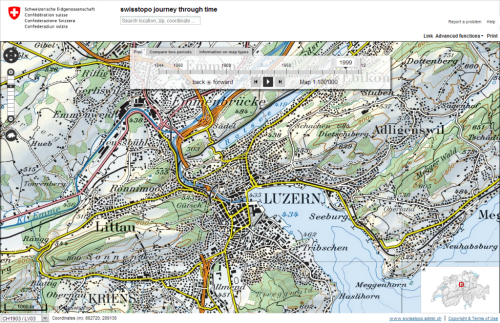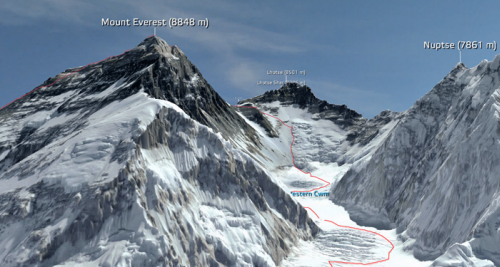
Click on the image to launch the Swisstopo Journey Through Time
Swiss cartography is renowned for its accuracy, quality and artistry and no collection of maps, let alone topographic maps, could ignore them. Swisstopo, the official name for the Swiss Federal Office of Topography are responsible for the production of topographic maps at a range of scales but how do you select a map representative of their work when we could conceivably fill an entire year of MapCarte blogs with just their work? Thankfully, they have produced a wonderful portal that allows you to explore the rich history of their work.
Journey Through Time lets you explore any area of Switzerland, from any time period mapped at any scale. It allows you to search, to animate through maps from different times, and to compare maps using an innovative overlay technique that fades one through to another using a simple slider control. Metadata is rich so you can easily identify the map and some of its background information. You can link to a specific map for sharing and also print out a full extract. As an example of a rich portal into national mapping this is beyond compare. As examples of design it’s tough to beat too.
The use of colour in particular has always been a characteristic of Swiss topographic mapping. On many map series (particularly the 1:100,000), colour is used to vary label meaning, show quantities, represent or imitate reality and to decorate which visually enlivens the map. The Swiss “style” is well structured, maintains uniformity, uses white space effectively, contains beautiful typography and unrivalled depiction of relief on topographic reference maps.
The typeface sets a classic tone using primarily ‘antique’ looking serifs that includes a unique combination of thick and thin strokes. Hill shading on most series and scales is in the classic Swiss style based on the work of Eduard Imhof. The maps are rich in content and deliver complex information in a succinct, well organised manner.
Swisstopo topographic maps are truly works of art. It’s actually tough to pick a stand-out amongst their many stand-outs so to be able to explore their catalogue through time and compare their artistry allows us to appreciate the full range of their work.















